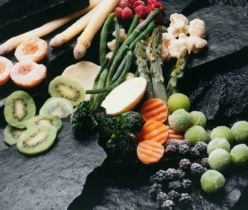Edibles that you purchase from the market do not just inform you about the calories at the back of the pack. They also give you other types of information. Many of us do not have a habit of reading such information, mostly because of two major reasons. One of the top reasons is non-awareness of technical language used and the second one is obviously laziness. You might not be aware of the technique of reading the nutrition labels. So, here is the easiest way to skim the right information from the truckloads of that given on the back of your favorite food pack.
1. First is the Highest
Some of us have a peculiar way of reading the labels – we judge a product by finding out whether ‘whole wheat’ is mentioned or not. The quantity does not matter at all for people like us. However, I wish this was the actual way to read the label.
P.S. Please read the entire list of ingredients and take an informed decision.
2. Serving Size Matters
Size does matter and while reading food labels, it matters the most. If the serving size is low, all the listed ingredients could make a bigger impact on your health. What the manufacturers generally do is label the products with the smaller serving size. So, when you read the labels, you are under the impression that the product gives you more nutrition than it gives in reality.
- Just Watching Calories is Not Enough
Whether you are trying to lose weight or gain some weight or just watching the intake, you need not judge nutrition of the product based just on the mentioned calories. Some foods are rich in calories, but they might also be good for health as they satiate you for a longer period. The amount of calories that you consume varies depending upon the diet. However, it is advisable to consider other factors while reviewing a product. - Fiber, Protein, and Fats
While reviewing a food product, you need to take into account everything – right from the first ingredient mentioned at the back of the pack to the last one. You need to watch the calories and the sugar and also the fiber, protein, and fats in it. Fat, carbohydrates and protein present in the food are grouped as macronutrients.
# Did you know about healthy fats?
Are you aware of the difference between healthy fats and regular ones? You might be surprised as most of us believe that ‘fat’ is never good, right? But that’s not the truth. Fats need to be an important part of your diet. They should not be seen with negation all the time. This is because fats also have a kind known as polyunsaturated fats that are further bifurcated as Omega-3 and Omega-6. You might have heard about these. Omega-3 fatty acids are good for your heart. These even help in reducing inflammation. However, Omega-6 fatty acids are the bad ones as they can result in inflammation. Further, they even store fat. Hence, while skimming nutrition labels, you need to make sure that the fats that you will be consuming are healthy.
5. What is the Maximum Limit of Sodium?
Sodium stands for salt and its friends. Yes, sodium might turn out the culprit in ruining your health if it is in an excessive amount of your food. In fact, while reading labels if you find out that the amount of sodium is higher than 1000 mg per serving than you should not opt for that food. Too much sodium is not good for health.
- Know About Each Ingredient
Reading nutrition labels at the back of the pack is quite technical, I can very well understand. However, you need to learn the basics of it. However, if you are not able to judge the ingredient by its name, do not consume the product.
7. How Much Sugar is Enough?
While people would not want to limit their sugar intakes, it is suggested that sugar should not exceed more than 10 grams per serving. In a day’s span, you consume different types of sugar – while some are added, others are natural. Fruits and vegetables have natural sugars, which can be consumed without much ado. This is because whole foods even have fiber, which is good for health. While whole fruits are good, fruit juices are not that good, as they are devoid of fiber and are loaded with fructose. It is advisable not to exceed the number of artificial sugars as it can turn out detrimental to health.
8. Sugar-free Might Not be Healthy
Given the war around sugar, you might be thinking to completely avoid sugary stuff. And for this, you opt for products that are labeled with sugar-free. But you are getting fooled again. Sugar-free stuff might not be healthy for you for different reasons. This is because smart manufacturers are using tactics to hide the sugar content. They replace sugar with other sweeteners in the food which might be unhealthy if had in larger quantities. To substitute sugar, manufacturers make use of honey, dates or even jaggery. They even use syrups at times to make the product taste as you like – sweet. Further, manufacturers at times use artificial sweeteners in exchange of sugar. However, these artificial sweeteners are not good for health. Healthcare experts maintain that such sweeteners are taxing on the gut and one should avoid them or at least, limit their intake.



